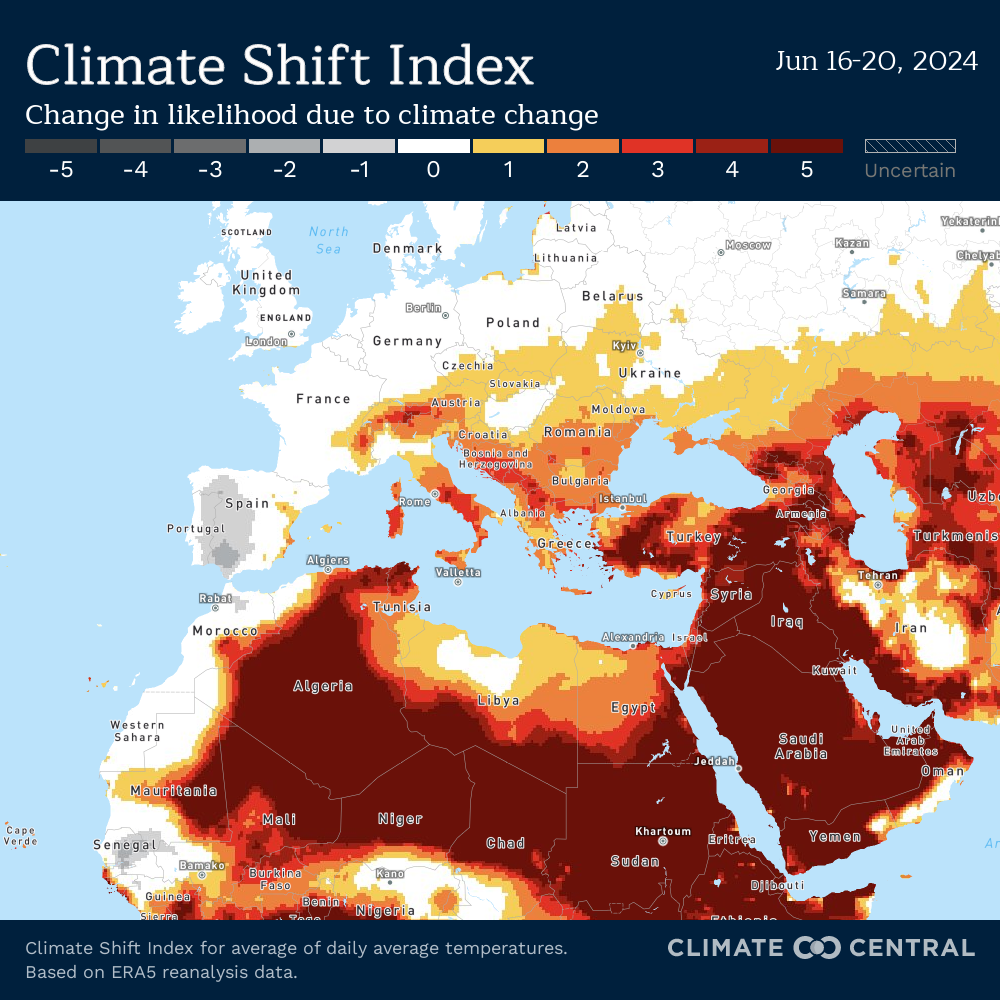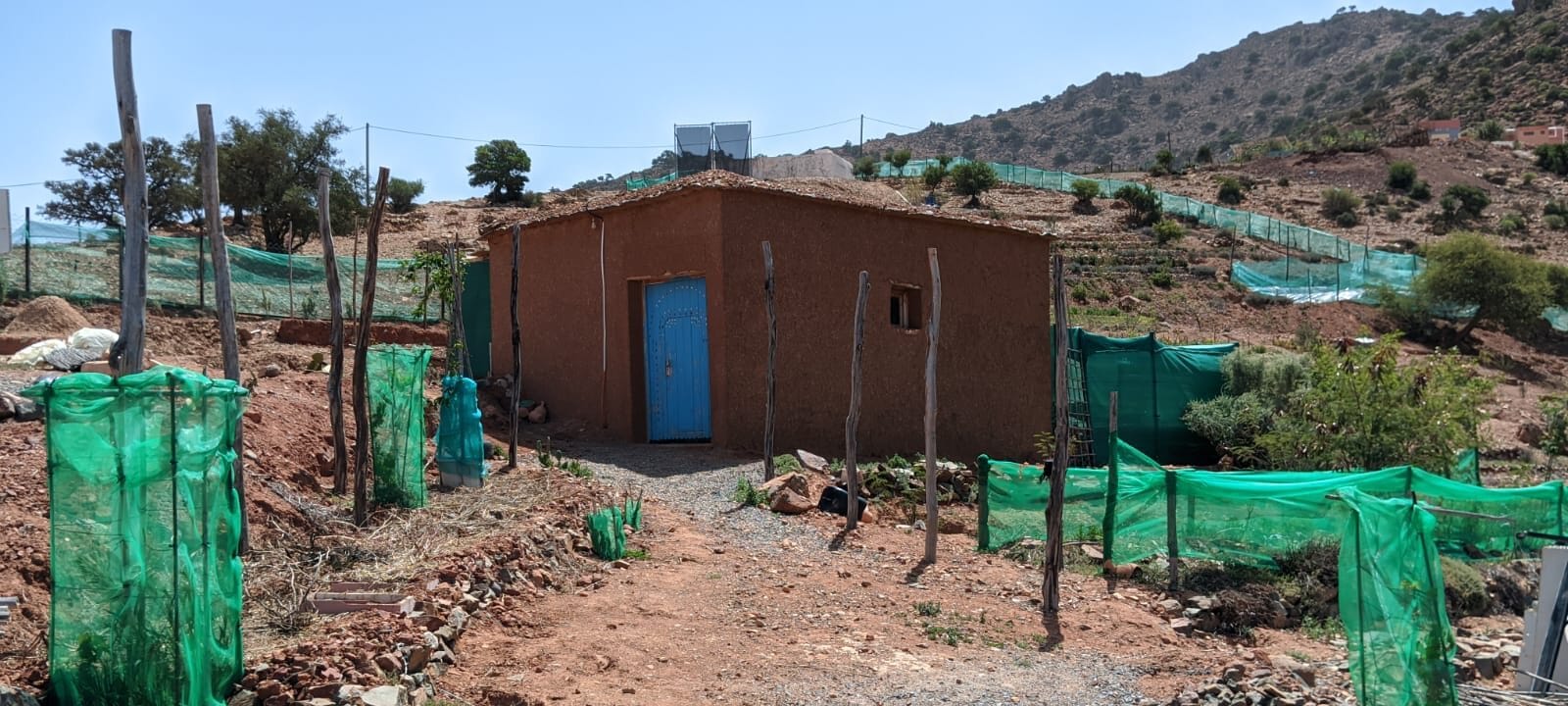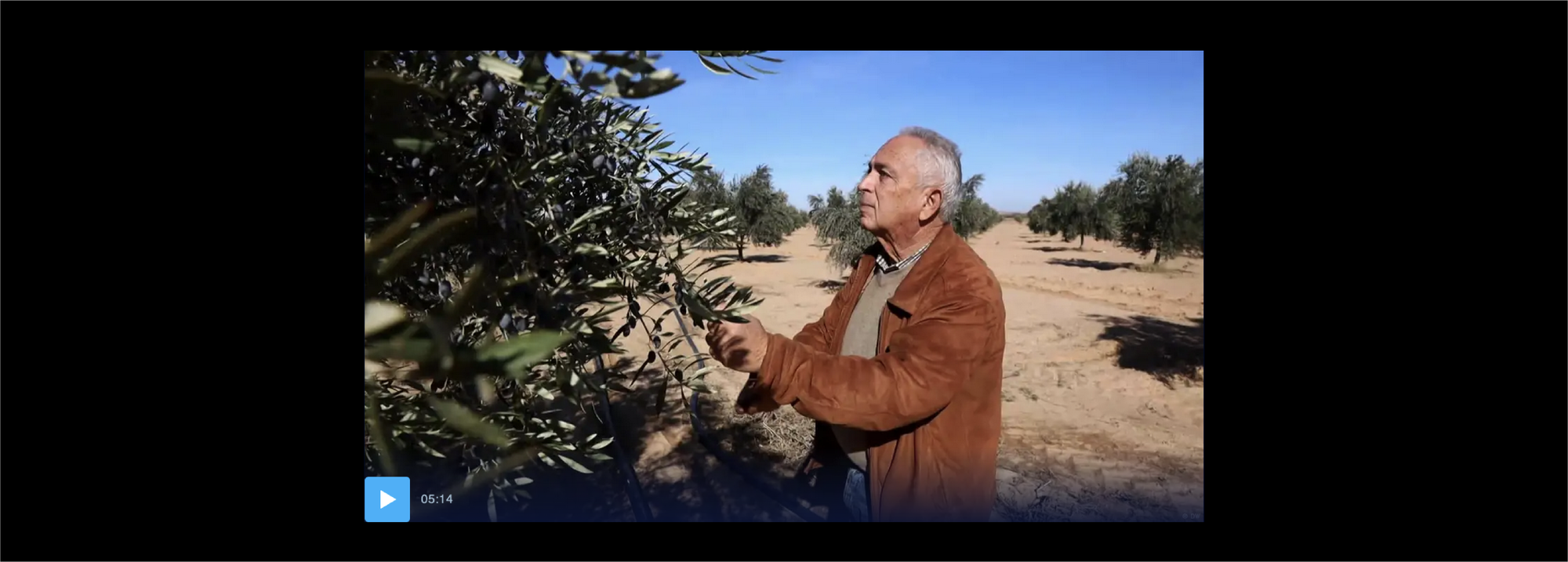This month, we are bringing you a special issue of Lapilli in partnership with Egab, an Egypt-based initiative aiming to empower local journalists across the Middle East and Africa. Thus, in this edition, we focus especially on the southern and eastern portions of the Mediterranean basin. We’ll do so by delving into the heatwave that has been plaguing different regions across the southern Med, from the Maghreb all the way to the Levant. We are also taking a closer look at how rising temperatures are exacerbating the humanitarian crisis in Syria, and why Egypt is waging war on trees. In Lebanon, we’ll learn about heat-resisting bees before heading to Morocco to explore a local, drought-resilient seed bank. We hope you enjoy it! Please, forward this email and invite others to subscribe. In the next issue, we’ll then cover the torrential rains hitting France, Italy and Switzerland and other recent climate-related events and reports that we didn’t include this time.

A scorching southern Med. In the past two months, nearly all countries within the Med’s southern basin reported a considerable rise in temperatures, with scorching heat exacerbating living conditions for at least 290 million individuals. Temperatures have reached or risen above 40 degrees Celsius (104 degrees Fahrenheit) in Egypt, Algeria and Syria, and temperatures between 30°C (86°F) and 38°C (100°F) were forecast in Libya, Gaza and Lebanon. In Egypt, heat exhaustion claimed the lives of 40 people in the southern city of Aswan, where temperatures reached almost 50°C (122°F). Dozens of Sudanese refugees fleeing the onslaught to the south also died from similar causes while en route to Egypt. In Algeria, civil authorities were striving to control massive wildfires that broke out in four southeastern provinces, resulting in extensive property damage and crop destruction. In June, the governor of Jendouba, Tunisia, prohibited camping in the forests and mountains after a wildfire broke out in the mountains of Ghardimaou. Tunisia is preparing for the worst in 2024, after enduring a particularly challenging year of fires in 2023. The threat of widespread fires endangers the country's crops at a time when wheat imports are straining the national budget. In Morocco, where forests cover 12 percent of the country's land area, authorities have allocated a $15.3 million budget for purchasing new firefighting vehicles, enhancing ground and aerial surveillance patrols, and maintaining forest monitoring towers. A recent study by World Weather Attribution found that human-caused climate change increased the likelihood of the recent heatwave, and in conflict-affected areas like Gaza, Syria, Lebanon and Jordan, millions of people are enduring severe ramifications. For a comprehensive understanding of the effects of rising temperatures in the war-torn eastern Mediterranean, we recommend WWA’s recent study: Climate change made the deadly heatwaves that hit millions of highly vulnerable people across Asia more frequent and extreme.
Another interesting piece of data is the forecasted daily average temperatures, which reached a Climate Shift Index (CSI) level of 5 in numerous southern Mediterranean countries in June. A CSI level 5 signifies that human-induced climate change has made this extreme heat event at least five times more likely, according to this index elaborated by Climate Central.

A dark Eid. We’ve already established that the Med’s southern basin is experiencing record heat, but people in Lebanon, Egypt and Iraq have been particularly struggling with the scorching temperatures. Lebanon has been plagued by chronic outages for decades, a situation many Lebanese attribute to corruption among the ruling elites. Prolonged power cuts have forced the majority to depend on privately owned generators, an additional burden in an economically crisis-stricken nation. Over in Iraq, where summer temperatures can exceed 50°C (122°F), the current heatwave has already pushed temperatures into the low 40s (100s in Fahrenheit). Despite its abundant oil resources, Iraq suffers from widespread power cuts, which activists blame on corruption and years of conflict. Cairo saw temperatures rise to 45°C (113°F), nearly 10°C (18°F) above last June's average. The heat and the Eid holiday left the usually bustling streets unusually quiet. Unlike Lebanon and Iraq, most Egyptians rely on state-supplied electricity. However, due to a slump in foreign currency revenues from the Suez Canal, exacerbated by the Gaza conflict, and reduced output from the Zohr natural gas field, the government has reinstated power cuts to conserve natural gas for export and secure hard currency (The National).
Syria’s internally displaced people are suffering. In 2023, the United Nations High Commissioner for Refugees reported that in the aftermath of the decade-long conflict in Syria, there are at least seven million internally displaced people (IDP), many of whom live in tents in overcrowded camps. The situation was further exacerbated after aid groups were forced to scale back humanitarian assistance due to reduced funding. IDPs in Syria, where temperatures reached 40°C (104°F) in June, have resorted to covering themselves in water-soaked sheets to retain moisture and cool down in the sweltering conditions. Others report spraying their tents with water to ease the searing heat that had made living in tents unbearable during daylight hours (Al Jazeera).
Egypt’s tree sacrifice. In Egypt, outraged citizens are accusing the government of carrying out a systematic plan for the mass felling of rare and historic trees at a time when temperatures in Cairo are approaching 45°C (113°F). Activists argue that trees, many of which were 30 meters (98 feet) tall or over 100 years old, were felled under the guise of creating traffic corridors, bridges and roads to alleviate congestion or to facilitate access to the new administrative capital. According to Egypt's Vision 2030, the country’s development plan announced in 2018, the goal was to increase urban green spaces to one square meter (about 10 square feet) per capita by 2020, rising to three square meters (32 square feet) by 2030. However, current levels are alarmingly low, with less than 0.74 square meters (eight square feet) per person in Cairo, significantly below the World Health Organization's minimum recommendation of nine square meters — about 96 square feet (Middle East Monitor).

Tunisia’s trees are cut down for profit. Forest fires are not the only threat to Tunisia’s woodlands. Although a lifeline to almost a million people, who rely on its trees for shelter, food and livelihood, forests are under the threat of increasing unsustainable human activities. In 2020, the northern and northwestern regions saw around 400 endangered Algerian oaks cut down for charcoal production, according to the country’s forestry agency. Four years later, the practice remains alive and well, as forest dwellers, driven by a lack of awareness and an urge to improve their economic conditions, are increasingly abandoning sustainable practices for immediate financial rewards. The consequences of this growing trend are seen in the decline of annual cork production from 9,000 metric tons in the 1980s to 4,000 tons produced today. The National Observatory of Agriculture warns that Tunisia could lose 18,000 hectares of cork forests by 2050, a vital economic resource providing jobs and income for thousands. The clearance of 200 hectares of pine forest in Aïn Draham in 2023 and widespread tree felling in Oued Zeen National Park in 2024, about 120 miles west of Tunis, further support activists’ allegations of logging permit corruption. Pundits argue that the unchecked exploitation has made Tunisia more vulnerable to increasingly frequent forest fires, including the devastating blazes witnessed in 2023 in northern Tunisia (Sky News).
Harvest comes early for Syria’s Damask rose. Back in Syria, rising temperatures have shifted the harvest season for Damask roses, which traditionally runs from May 15 to June 5, causing farmers to start a week earlier than expected. The premature blossoming of thousands of roses has posed a significant challenge for the farmers who rely on the profits made from selling the rose’s oil, which is best extracted before the flower blooms. The situation was compounded by economic sanctions on Syria that restrict the export of rose products, further limiting farmers' market access. The Damask rose, added to UNESCO's Intangible Cultural Heritage list in 2019, thrives in regions such as Nairab in Aleppo, Maren Assleb in Hama, Marah in Damascus, Mahalba in Latakia and other arid areas of the Syrian countryside. Following the destruction of irrigation facilities during the Syrian Civil War, Damask rose cultivation has become heavily dependent on rainfall. 2024’s rainfall has averaged 125 millimeters (slightly less than 5 inches), down from approximately 140 mm (5.5 inches) in 2023, with previous years recording an average of 400 mm — 15.7 inches (Ruya via Egab — coming up soon)

How heatwaves affect bees around the world — and in Lebanon. Rising temperatures as a result of worsening climate change are contributing to a global decline in bumblebee populations. Researchers have found that more frequent heatwaves are preventing bumblebees from thermoregulating their hives, which further endangers a species already experiencing decline (The Guardian).
In Lebanon, entomologists have studied different species of wild bees and discovered that their ability to resist heatwaves varies widely for different reasons. According to Mira Boustani, one of the researchers that carried out the study that was published in April in Apidologie, heat resistance of wild bees in Lebanon is closely tied to several factors, among which are their sex and species. These variations suggest that certain species may be inherently less resilient and more susceptible to extinction during future heatwaves. Within a species, then, females often exhibit greater heat resistance compared to males. Another important finding was that high-altitude bumblebee populations in Lebanon, like Bombus melanurus and B. niveatus, have lower heat resistance and so can face heightened risks from heat stress. This could lead to population declines or even extinction during heatwaves, making these high altitude areas a conservation priority.

Morocco’s forward-looking seed bank. Hundreds of farmers in Sidi Ifni, on the west coast of Morocco, are participating in an ecological seed bank initiative led by the Dar Si Hmad Foundation to support the local community, which has been grappling with drought for the past six years. In Morocco, the average annual temperature has risen by 1.8°C (3.24°F) over the past five years, exacerbating challenges posed by dwindling water resources crucial for both drinking and irrigation. The intensity of the drought in Morocco has reached such severity that a recent report from the EU's Joint Research Council has classified the country as an area of "severe concern." Launched in 2021, the seed bank collects indigenous, drought-resistant seeds from Morocco and Europe in a building with an architectural design that draws from the Amazigh people’s traditions (also known as Berber people), employing sun-dried clay to create a stable environment for seed preservation. Through careful seed storage and a farmer training program that introduces local farmers to ecological agriculture, the initiative aims to revive the land and improve the livelihoods of the locals (Reasons to be Cheerful via Egab).


Tunisia’s olive farmers are coping with rising temperatures. In Tunisia, olive farmers are grappling with the fallout from rising temperatures and a severe half-a-decade-long drought marked by irregular rainfall patterns that have significantly impacted harvests. In the Sfax region alone, olive yields have plummeted over the past five years, leaving farmers in dire straits. Rising labor and gas costs have driven up expenses, prompting many residents to abandon rural areas in search of employment in urban centers. The olive oil industry, a cornerstone of Tunisia's economy, is feeling the repercussions. Out of 348 oil mills, only 70 remain operational due to insufficient olive supply. Production has been halved as a result of the ongoing drought and scarce rainfall, leading to oils with diminished quality — dryer and more acidic due to reduced water content. To cope, some farmers are turning to unconventional methods such as irrigating their groves with treated wastewater, a practice that provides essential nutrients to the soil and boosts production. This approach also mitigates the high costs of traditional irrigation while addressing the environmental challenge of wastewater disposal. Furthermore, Greek and Spanish olive tree varieties have been increasingly adopted due to their higher yields and resilience to drought compared to local Tunisian varieties. These foreign varieties not only improve oil production, yielding high-quality oil, but also demonstrate better drought tolerance, producing more olives that resist drying out (Deutsche Welle).


MUHAMMED KOTB
He is an editor at Egab and a freelance journalist with over six years of experience under his belt. Born and raised in Cairo, where he currently resides, he covers stories on the environment, economy, politics, and science. He is also pursuing a master’s degree in molecular biology. His articles have been featured in Egyptian Streets, The National, The Guardian and Al Jazeera.
That's it for this month. Thank you for reading this far. See you in August or earlier with Lapilli+.
If this newsletter was forwarded to you, you can subscribe here to continue receiving it. Lapilli is free and always will be, but in case you would like to buy us a coffee or make a small donation, you can do so here. Thank you!
Lapilli is the newsletter that collects monthly news and insights on the environment and the Mediterranean, seen in the media and selected by Magma (or allies).

